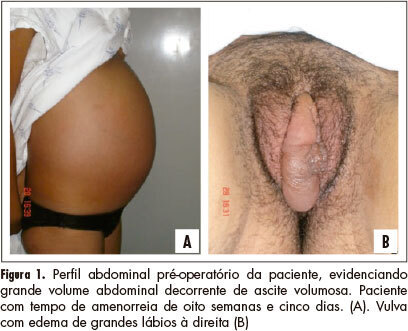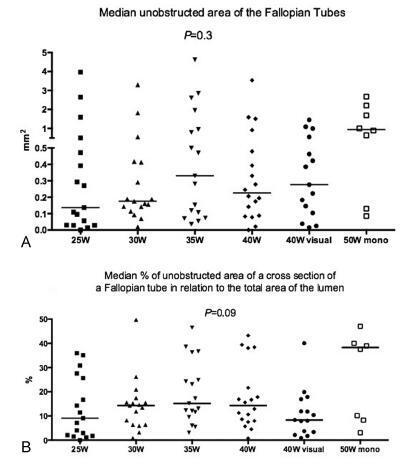Summary
Revista Brasileira de Ginecologia e Obstetrícia. 2006;28(6):331-339
DOI 10.1590/S0100-72032006000600003
PURPOSE: to evaluate the impact of supplementary ferrous sulfate and dietary counseling on hemoglobin levels in pregnant women. METHODS: a total of 197 pregnant women were evaluated during antenatal care at a health center. The treatment group consisted of 105 women who were prescribed 60 mg dietary iron per day, received dietary counseling and had hemoglobin measured by a portable photometer between the 14th and 20th week of pregnancy. The treatment group was reevaluated according to hemoglobin levels and food intake by a semiquantitative food frequency questionnaire after the 34th week of pregnancy. The control group consisted of 92 women in a cross-sectional study, at no less than 34 weeks of pregnancy. Hemoglobin was analyzed by a portable photometer and anemia was defined concentrations of less than 11 g/dL. All pregnant women had their weight and height measured. Hierarchical logistic regression model was developed for the multivariate analysis. RESULTS: prevalence of anemia at the end of the third trimester was 31.6% in the treatment group and 26.1% in the control group (p=0.43). Use of the prescribed supplement was reported by 65% of women in the treatment group, of which 67.7% interrupted the treatment at some point. Principal reasons for interrupting treatment were forgetting (43.2%) and nausea or vomiting (27.2%). Risk of anemia in the third trimester was three times higher in women with less than 8 years of schooling. CONCLUSIONS: use of ferrous sulfate was not shown to be associated with lower prevalence of anemia. The results suggest that structural changes in socioeconomic conditions are needed in order to alter the current situation regarding iron deficiency anemia.
Summary
Revista Brasileira de Ginecologia e Obstetrícia. 2013;35(7):331-335
DOI 10.1590/S0100-72032013000700008
The sclerosing stromal tumor of the ovary is an extremely rare benign tumor more common in young women and without specific symptoms in most cases. Less than 150 cases have been described, of which 8 were diagnosed during pregnancy. In this report, we describe the association between sclerosing stromal tumor of the ovary, Meigs' syndrome and elevated levels of CA-125 in term pregnancy.

Summary
Revista Brasileira de Ginecologia e Obstetrícia. 2007;29(7):331-334
Summary
Revista Brasileira de Ginecologia e Obstetrícia. 2018;40(6):332-337
To determine which mode and potency of electrocoagulation, using a modern electrosurgical generator, yields the smallest unobstructed area of the Fallopian tubes.
In an experimental study, tubes from 48 hysterectomies or tubal ligation were evaluated. Tubes were randomly allocated to one of the following groups: group A) 25 W x 5 seconds (n = 17); group B) 30 W x 5 seconds (n = 17); group C) 35 W x 5 seconds (n = 18), group D) 40 W x 5 seconds (n = 20); group E) 40 W x 5 seconds with visual inspection (blanch, swells, collapse) (n = 16); group F) 50 W x 5 seconds (n = 8). Bipolar electrocoagulation was performed in groups A to E, and monopolar electrocoagulation was performed in group F. Coagulation mode was used in all groups. Digital photomicrography of the transversal histological sections of the isthmic segment of the Fallopian tube were taken, and themedian percentage of unobstructed luminal area (mm2) was measured with ImageJ software (ImageJ, National Institutes of Health, Bethesda, MD, USA). The Kruskal-Wallis test or analysis of variance (ANOVA) was used for statistical analysis.
Ninety-six Fallopian tube sections were analyzed. The smallest median occluded area (%; range) of the Fallopian tube was obtained in the group with 40 W with visual inspection (8.3%; 0.9-40%), followed by the groups 25 W (9.1%; 0-35.9%), 40 W (14.2; 0.9-43.2%), 30 W (14.2; 0.9-49.7%), 35 W (15.1; 3-46.4%) and 50 W (38.2; 3.1-51%). No statistically significant difference was found among groups (p = 0.09, Kruskal-Wallis test).
The smallest unobstructed area was obtained with power setting at 40 W with visual inspection using a modern electrosurgical generator. However, no statistically significant difference in the unobstructed area was observed among the groups using these different modes and potencies.

Summary
Revista Brasileira de Ginecologia e Obstetrícia. 2020;42(6):333-339
Sexual function is a multidimensional phenomenon that is affected by many biological and psychological factors. Cognitive-behavioral sex therapies are among themost common nonpharmacological approaches to psychosexual problems. The purpose of the present study was to investigate the effectiveness of psychoeducational and cognitive-behavioral counseling on female sexual dysfunction.
The present study was a clinical trial with intervention and control groups. The study population consisted of women referring to the general clinic of a governmental hospital in Iran. After completing the demographic questionnaire and Female Sexual Function Index (FSFI), those who obtained the cutoff score ≤ 28 were contacted and invited to participate in the study. Convenience sampling method was used and 35 subjects were randomly allocated for each group. Eight counseling sessions were held for the intervention group (two/week/1.5 hour). Post-test was taken from both groups after 1 month, and the results were statistically analyzed by PASW Statistics for Windows, Version 18 (SPSS Inc., Chicago, IL, USA).
The total mean scores of FSFI and the subscales of sexual desire, arousal, orgasm, and satisfaction were significantly higher in the intervention group than in the control group after the intervention. In addition, postintervention pain mean scores in the intervention group were significantly lower than in the control group (p < 0.05).
The results of the present study indicate that psychoeducational cognitive- behavioral counseling is effective in improving female sexual function. It is recommended to compare the effects of psychoeducational cognitive-behavioral counseling on sexual dysfunctions of couples and with a larger sample size in future research.
Summary
Revista Brasileira de Ginecologia e Obstetrícia. 2001;23(5):333-333
DOI 10.1590/S0100-72032001000500011
Summary
Revista Brasileira de Ginecologia e Obstetrícia. 2001;23(5):333-333
DOI 10.1590/S0100-72032001000500010